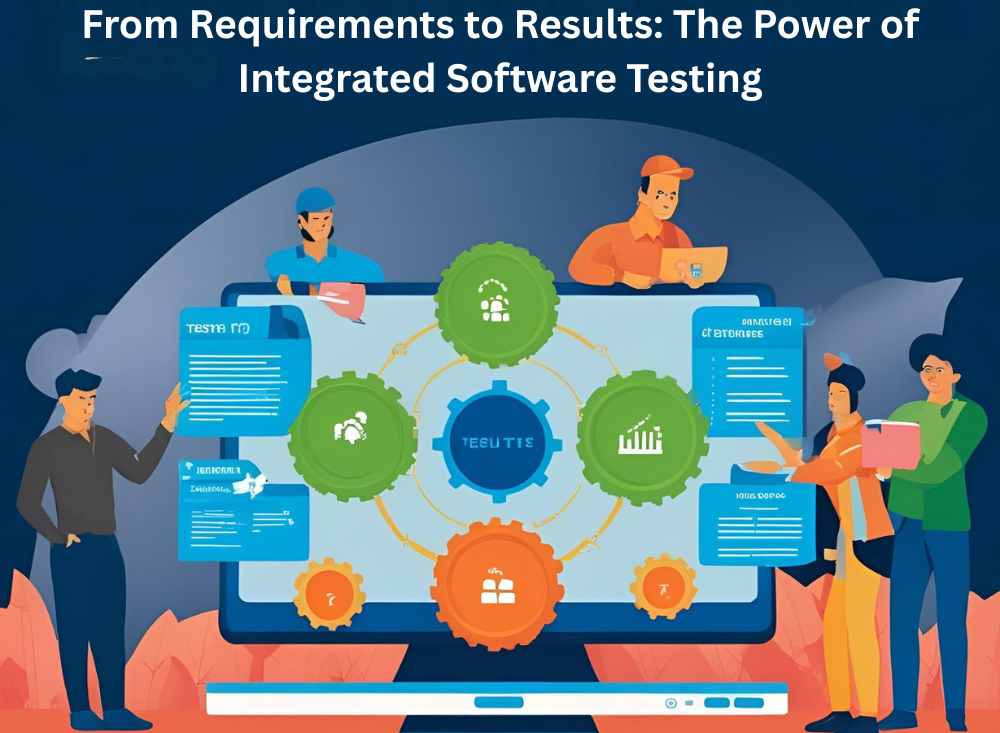
Introduction: Bridging the Gap Between Vision and Validation
In today’s competitive digital landscape, simply gathering software requirements isn’t enough. Organizations need a proven methodology to transform those requirements into fully tested, production-ready solutions. This is where the power of integrated testing comes into play – a strategic approach that aligns quality assurance with the entire software development lifecycle (SDLC).
The Requirements-Testing Continuum
1. Translating Requirements into Testable Artifacts
- Requirement Analysis: Deconstructing stakeholder needs into verifiable components
- Test Basis Creation: Developing traceability matrices to ensure complete coverage
- Acceptance Criteria Definition: Establishing clear pass/fail metrics for each requirement
2. The Integration Imperative
Traditional siloed approaches often fail because:
- 40% of defects originate from misunderstood requirements (IBM Systems Sciences Institute)
- 65% of projects experience requirements creep without proper validation (PMI)
- Integrated testing reduces rework by up to 60% (Capgemini Research)
The Integrated Testing Framework
1. Shift-Left Testing Integration
- Requirement Validation: Static testing of specifications before coding begins
- Behavior-Driven Development (BDD): Creating executable specifications
- Model-Based Testing: Generating test cases from system models
2. Continuous Verification
- CI/CD Pipeline Integration: Automated requirement validation at every commit
- Living Documentation: Always-updated test artifacts synchronized with requirements
- Real-Time Traceability: Dashboards showing requirement/test/defect relationships
Proven Integration Strategies
1. Risk-Based Test Prioritization
- Impact mapping to align tests with business objectives
- Requirements risk scoring (likelihood × severity)
- Optimized test suite composition
2. AI-Powered Test Generation
- Natural language processing to convert requirements into test cases
- Machine learning for test optimization
- Predictive analytics for requirement coverage gaps
3. Collaborative Requirements Engineering
- Three Amigos sessions (BA, Dev, QA)
- Shared ownership of requirement quality
- Joint definition of “done”
Measuring Integration Success
| Metric | Measurement Approach | Target Benchmark |
| Requirement Test Coverage | % of requirements with linked test cases | 100% |
| Defect Escape Rate | Bugs found post-production per KLOC | < 0.5 |
| Validation Cycle Time | Days from requirement to verified test | < 3 |
| Change Impact Accuracy | % of affected tests correctly identified | > 95% |
Overcoming Integration Challenges
Challenge 1: Requirement Ambiguity
- Solution: Implement requirement review checklists
- Tool: Natural language processing analyzers
Challenge 2: Traceability Breakdown
- Solution: Automated traceability matrices
- Tool: Application Lifecycle Management (ALM) systems
Challenge 3: Testing Bottlenecks
- Solution: Service virtualization for dependencies
- Tool: API simulation platforms
The Future of Requirement-Driven Testing
Emerging trends are reshaping how we bridge requirements and testing:
- Digital Twin Testing: Virtual validation of systems against requirements
- Blockchain-Verified Testing: Immutable requirement-test-deployment chains
- Cognitive QA Systems: AI that understands intent behind requirements
Conclusion: Building the Quality Bridge
Transforming software requirements into reliable solutions requires more than just technical testing skills—it demands strategic integration across people, processes, and tools. By implementing these integrated approaches, organizations can:
✓ Reduce defects by up to 80% in production
✓ Accelerate delivery cycles by 30-40%
✓ Improve stakeholder satisfaction by 50% The most successful digital enterprises aren’t those with the best requirements or the best testers—they’re those that have mastered the art of integration between these critical functions. As software systems grow more complex, this integration will become the differentiator between market leaders and laggards.